Sarubobo: A Generational Gift from the Mountains of Hida
Updated: Nov 26, 2024
As I explored the mountain town of Hida Takayama, nestled in Japan’s Gifu Prefecture, a peculiar character began to pop up everywhere I went—one that has graced the area for generations.

Known for its historic streets and traditional craftsmanship, Takayama is a treasure trove of culture—and one of the most eye-catching symbols you’ll find here is the Sarubobo.
With its arms spread open, featureless face, and splash of color, Sarubobo are one of the most eye-catching sights the area has to offer.
What Are Sarubobo Dolls?
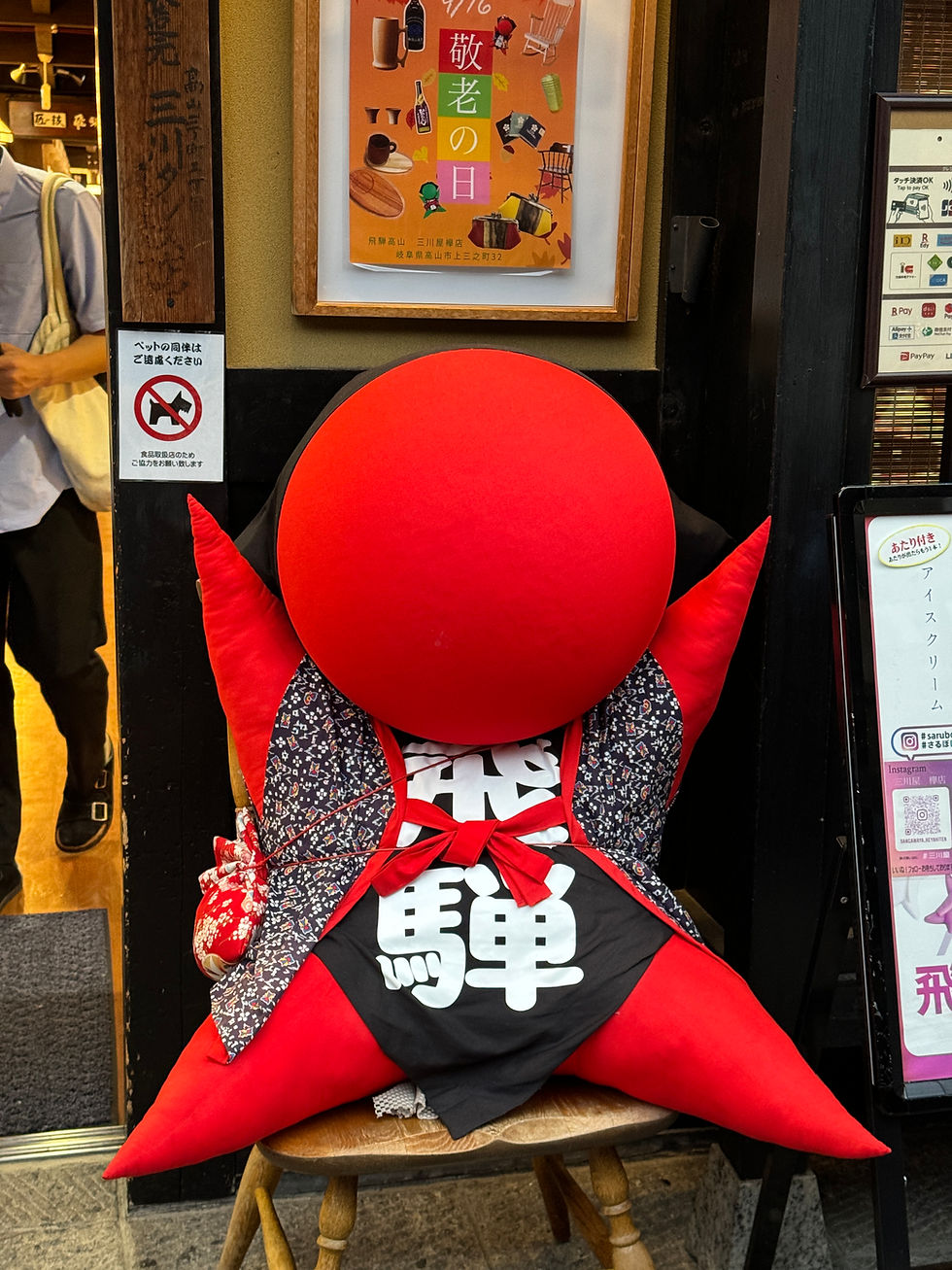
In speaking to the locals, I came to learn that Sarubobo are believed to have originated back in the Nara period, over 1200 years ago. Legend has it that they were brought over from China and were often placed in maternity houses as a talisman to ensure safe delivery. While Sarubobo were originally used by the aristocratic class, they became more commonplace during the Edo Period. Sarubobo soon became a doll made for both children and grandchildren as a way of ensuring good fortune.
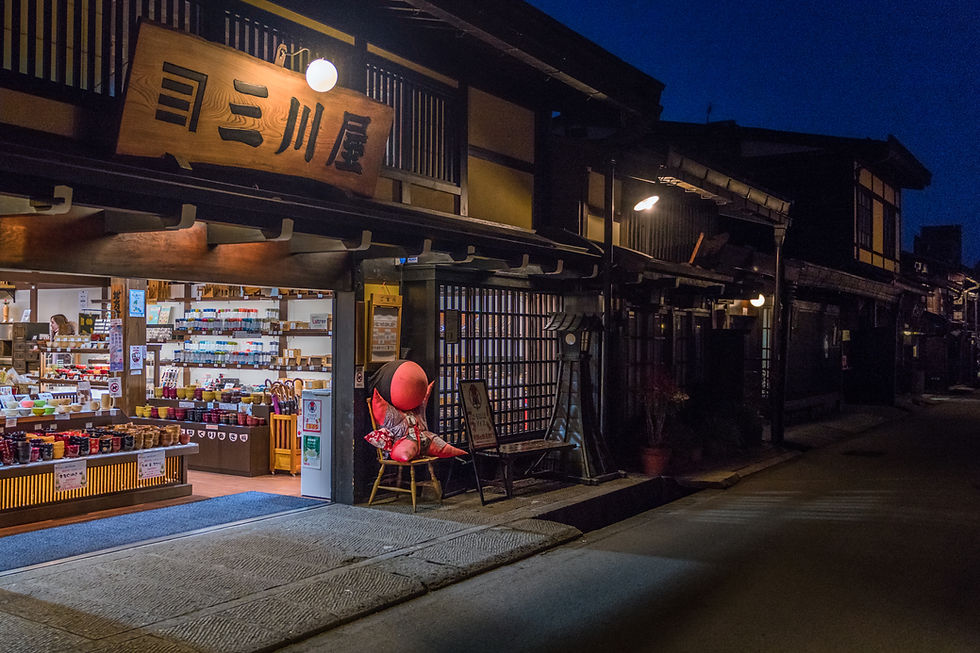
Once I had learned the origins of these fascinating characters, I began to wonder what ‘Sarubobo’ even meant. As it turns out, for such a simple-looking doll, the name actually has a rather deep level of significance. In short, Sarubobo stands for 'monkey baby’.
In the local Hida dialect, the word ‘bobo’ is used to mean ‘baby’. When it comes to the first half of the word, things get a little more complicated. The word ‘saru’ is commonly used to mean ‘monkey’, hence the term 'monkey baby’. However, based on the kanji characters used, it can also mean ‘leave’. In the case of Sarubobo, either of these words work, as the doll itself is said to resemble a monkey, and they have also been used to both ward off illness and to help those who have fallen ill to recover.
Sarubobo: The Ancient Symbolism of Hida Takayama’s Iconic Charm
The Sarubobo dolls are deeply rooted in ancient beliefs about the protective powers of monkeys. In Japanese folklore, monkeys were considered auspicious animals, particularly associated with protecting women during childbirth. Their agility and perceived power to ward off evil spirits made them ideal symbols of safety and health.
Initially, they were commonly made not only for babies but also as gifts for brides-to-be, as a blessing for a happy marriage and healthy family. As time passed, Sarubobo dolls evolved into a universal symbol of good fortune.
The Unique Design of Sarubobo: Why These Dolls Lack a Face
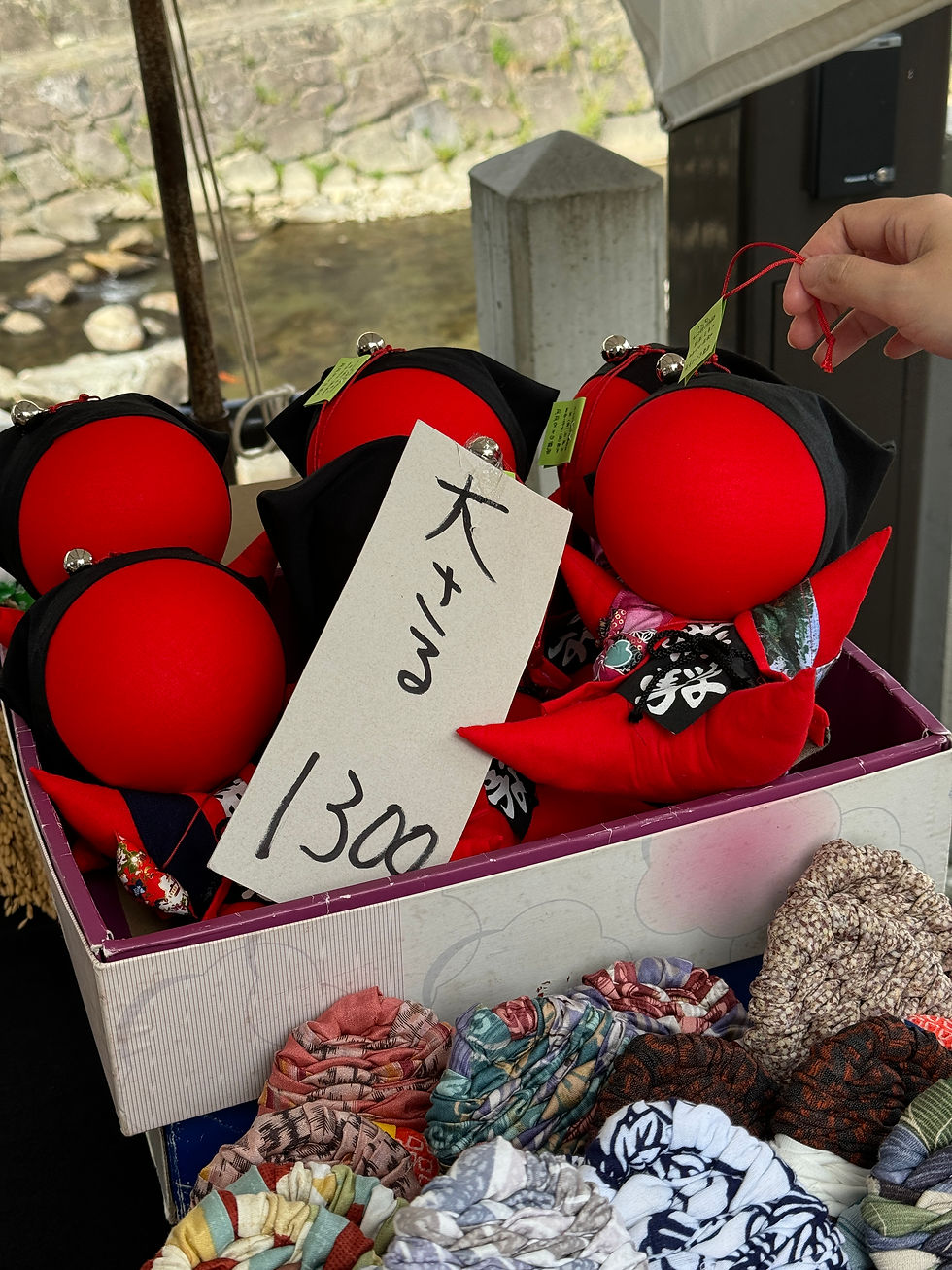
One of the most distinctive qualities of Sarubobo that immediately caught my attention is the lack of any facial features. If you enjoy taking in art as much as I do, then you’ll know that faces are often considered to be an essential element to convey emotion and build a connection with the viewer.
However, it is believed that for this very reason, Sarubobo lacks a face. Some say that they have no face so that the owner can project their own feelings onto their doll. Perhaps this is what attracted me to the Sarubobo, as I often enjoy art that asks me to reflect on what it means to me on a personal level rather than giving me all the answers. I love that each Sarubobo can convey something completely different to each person who stumbles across one. Regardless of the reason, the simple design is one that has stood the test of time.
Choosing the Perfect Sarubobo: What Each Color Represents
During my stroll along the Miyagawa Morning Market, I noticed that, while the predominant color was red, there were plenty of colors to choose from. As it turns out, each color of Sarubobo holds its own special meaning.
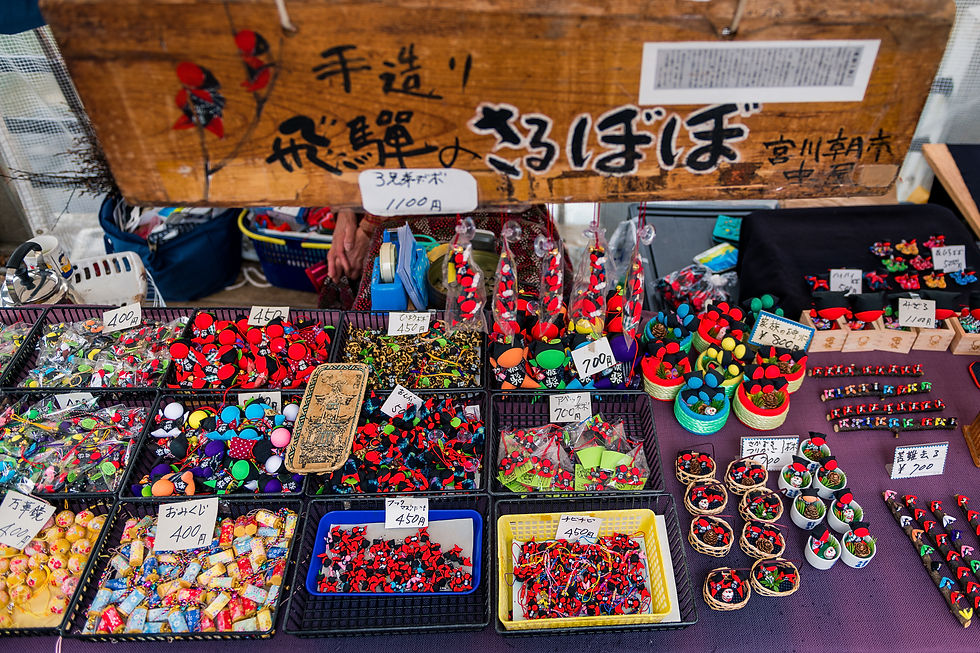
As my eyes scanned across the table, I felt a bit overwhelmed, so I opted to go with the traditional Red Sarubobo, which is believed to bring good luck for marriage, fertility, and to ensure the well-being of both the mother and child during childbirth.
Upon my next visit to Takayama, I intend to pick one up for my daughter, but the question remains, which Sarubobo should I choose?
My daughter will be starting school soon, so I’ll likely pick up a Blue Sarubobo, as they are the most popular among students since they bring good luck regarding academic endeavors.
Then again, maybe the Green Sarubobo is the more practical way to go, since they promise to help her stay healthy. With the way bugs get passed around in elementary school, that is sure to come in handy.
Perhaps it would be best to ensure my daughter achieves financial success by giving her a Gold Sarubobo. After all, it’s never too early to start a retirement fund.
With ten different kinds of Sarubobo, I have some major thinking to do before I take my next stroll along the Miyagawa Morning Market.
Where to Find Sarubobo: A Guide to Takayama’s Miyagawa Morning Market
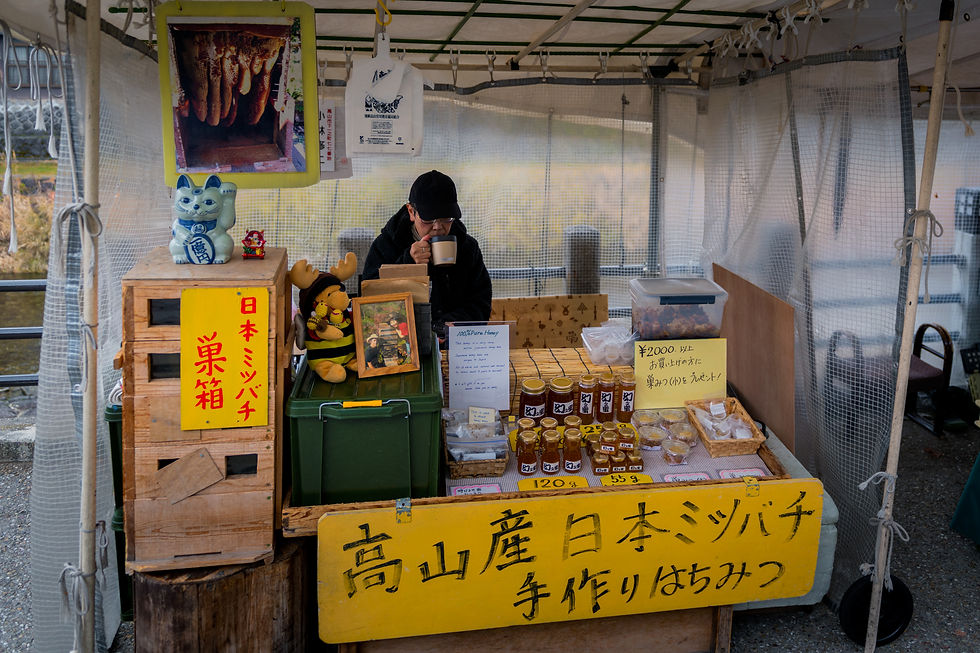
While you can find Sarubobo just about anywhere in Hida Takayama, I recommend visiting the Miyagawa Morning Market, which is held most mornings between the hours of 7am and 12pm along the Miyagawa River in Takayama City. Here, you can find a variety of different sizes and colors of Sarubobo made by the locals. Not only can you get the perfect gift, but you can also support the locals and pass this generational tradition on to someone special in your life.
Whether you’re shopping for yourself or someone special, rather than buying a generic souvenir, why not bring home a one-of-a-kind gift from the mountains of Hida Takayama—one that can be handed down for generations to come?
If you want to learn more about Sarubobo or stroll the Miyagawa Morning Market yourself, you can reach out here for a free consultation.






Comments